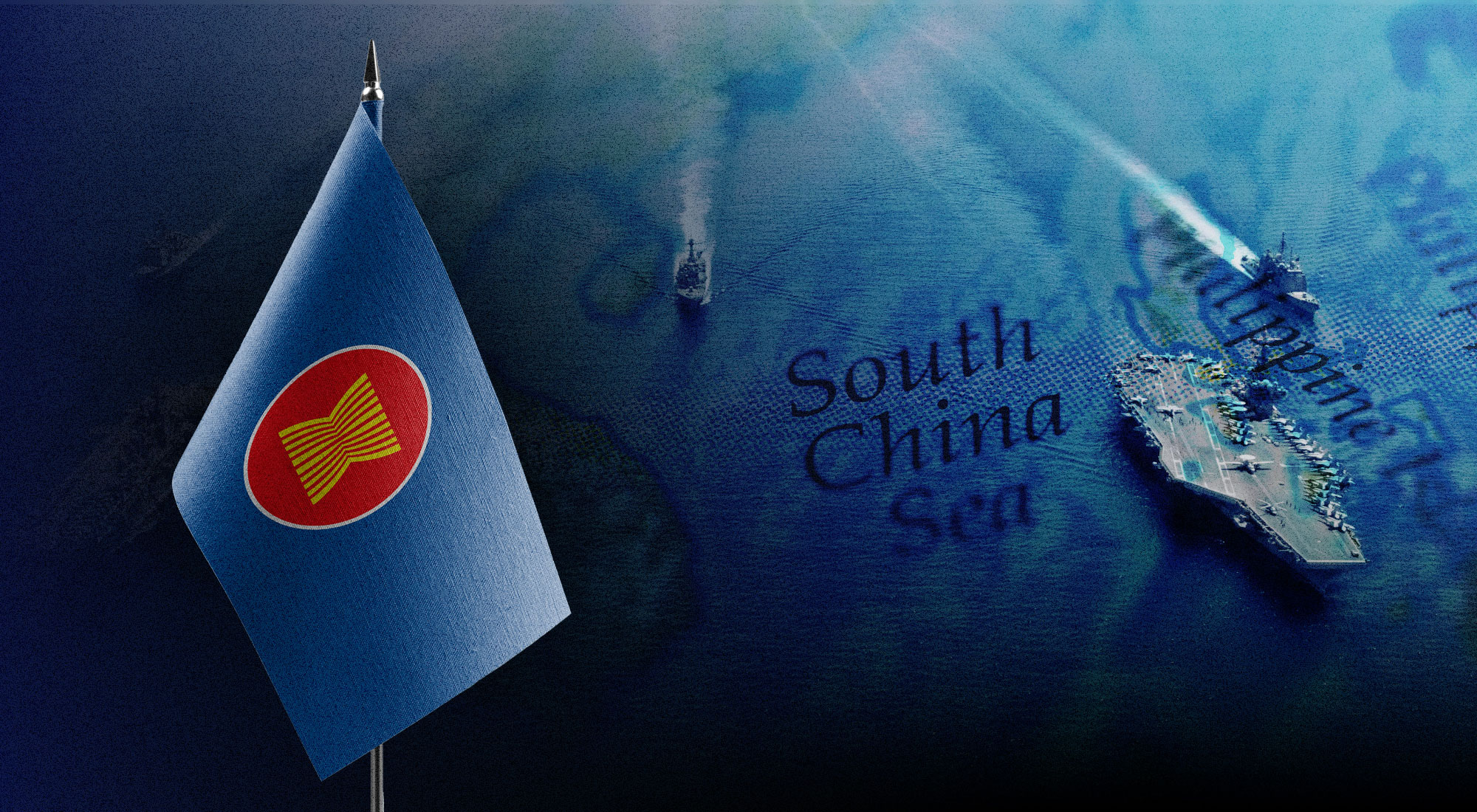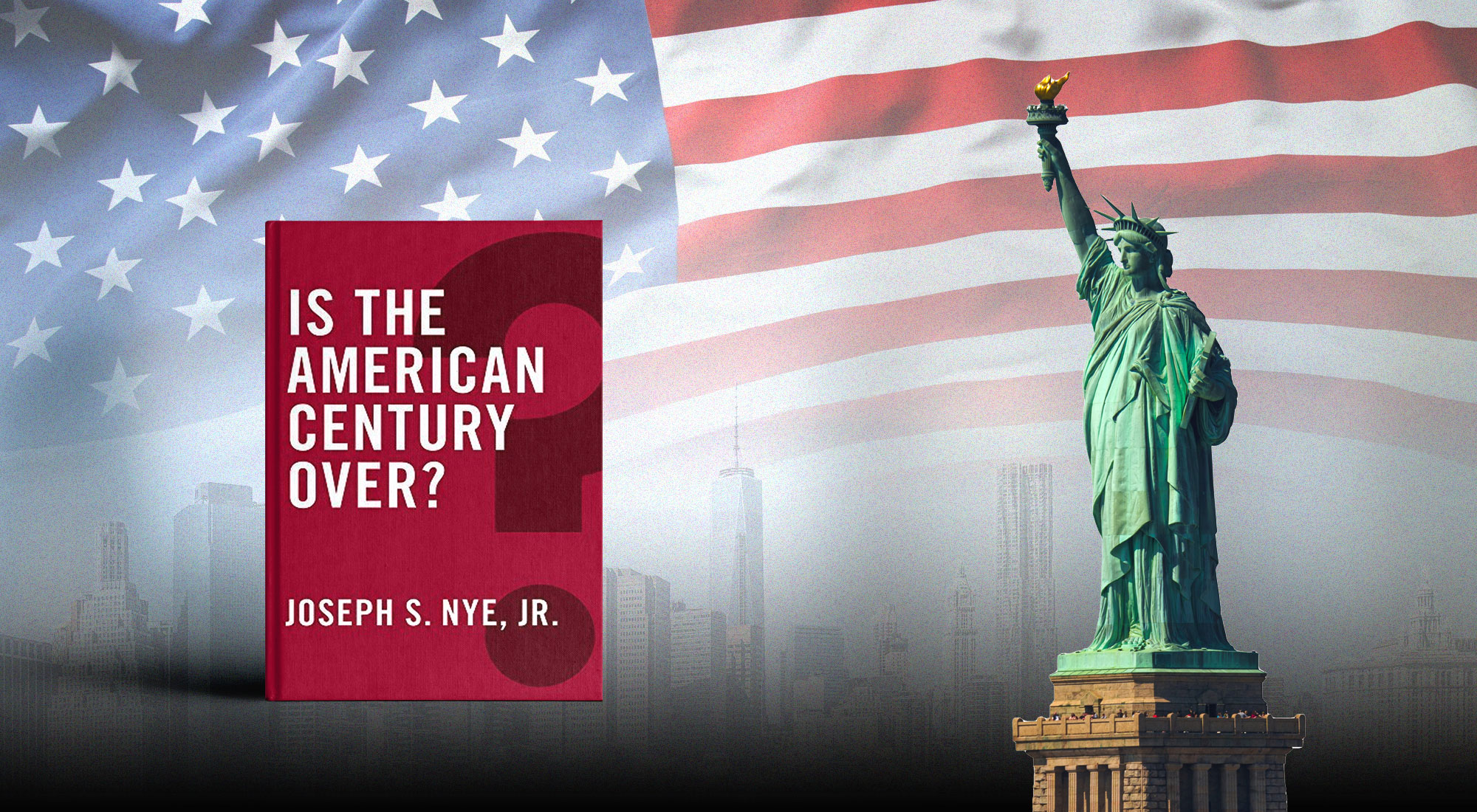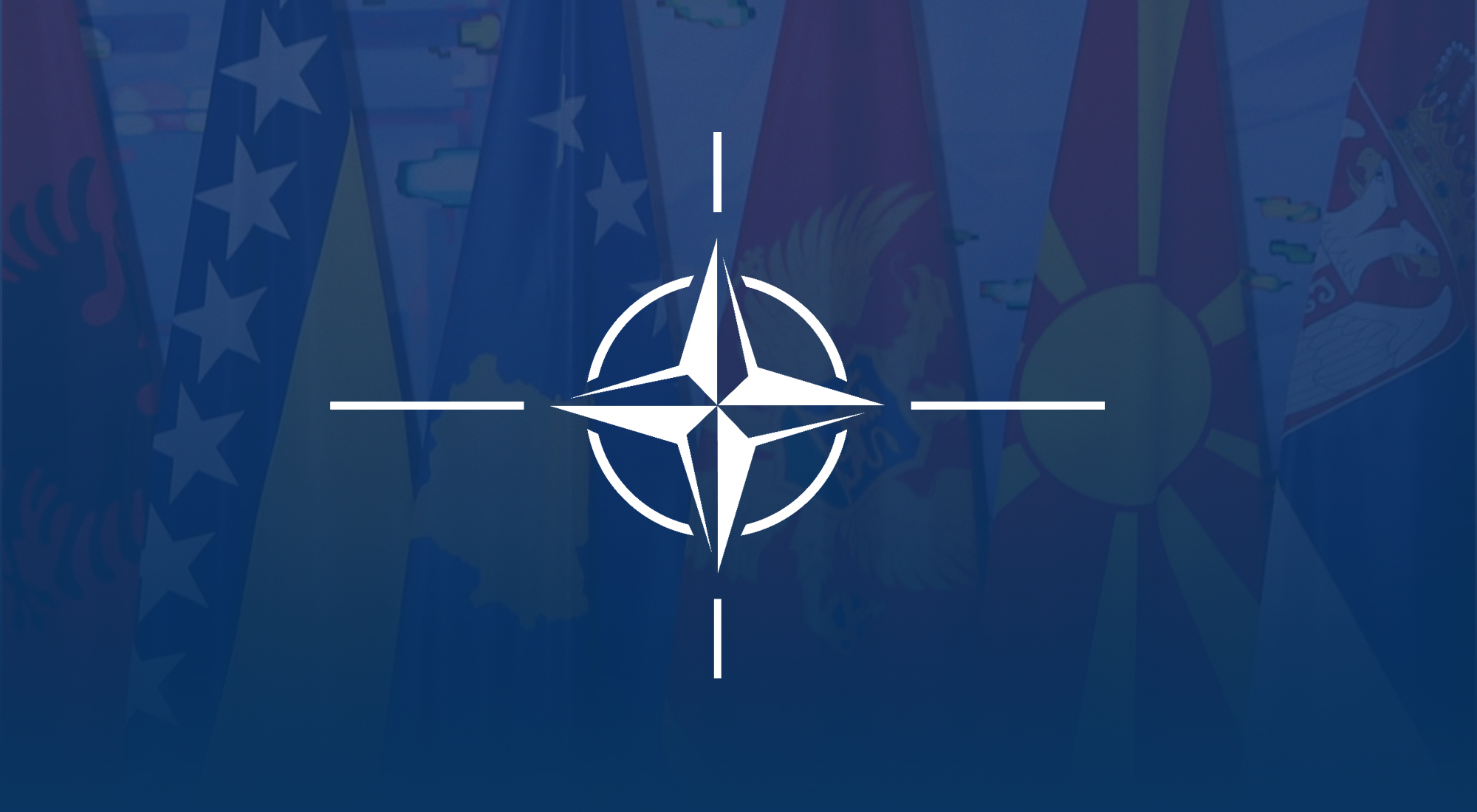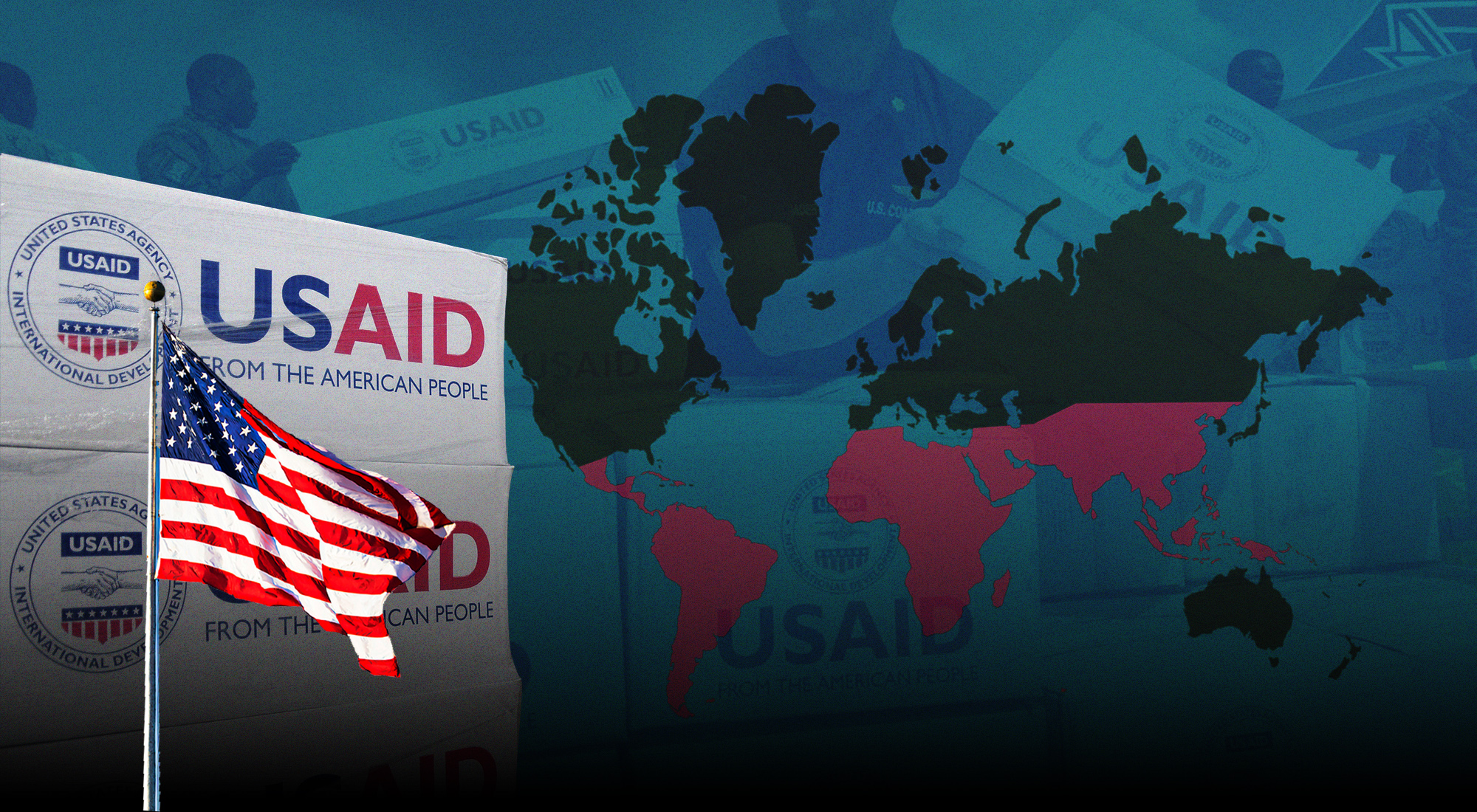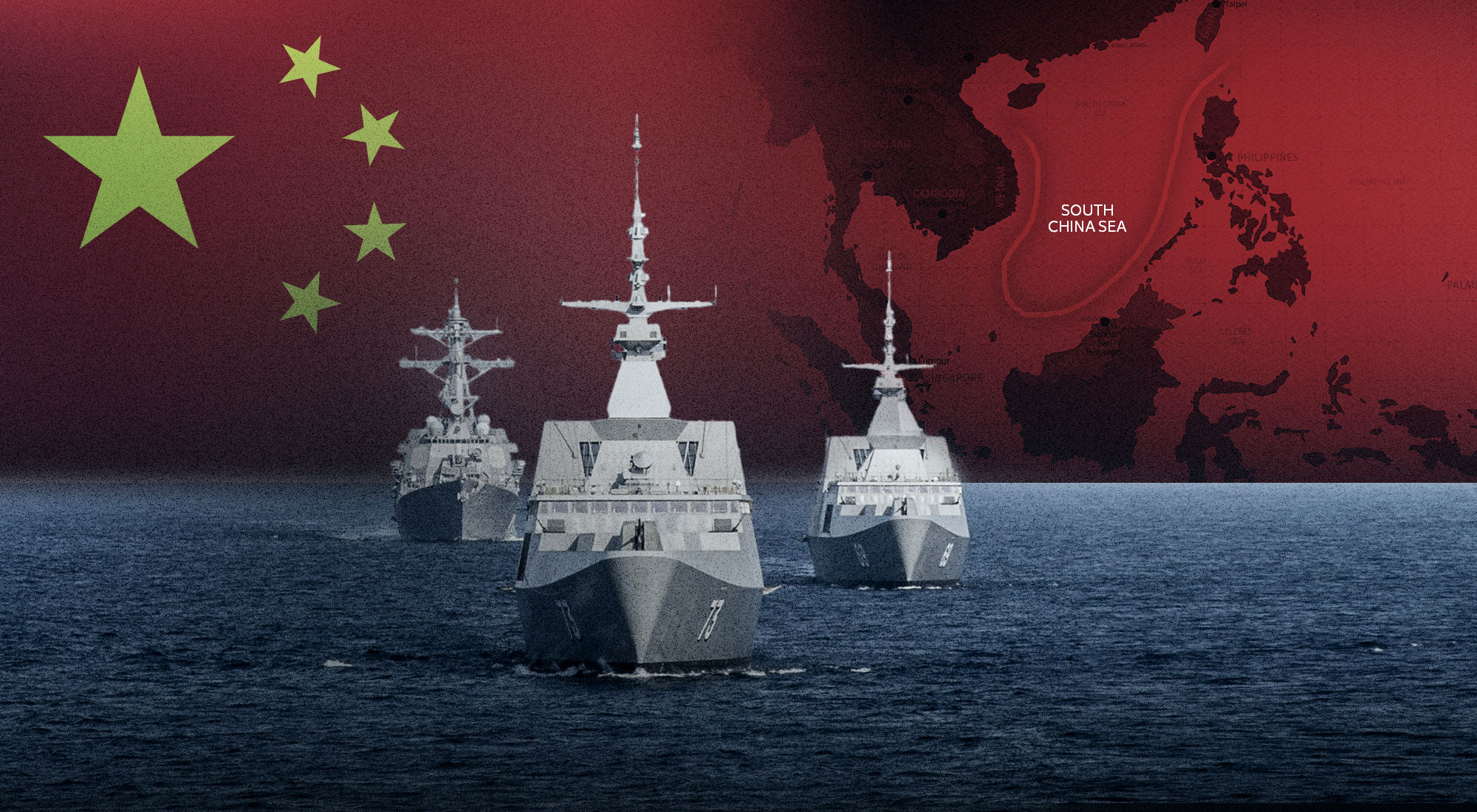With escalating tensions in the South China Sea, particularly between China and the Philippines, ASEAN is once again in the spotlight. As a regional bloc often praised for its diplomatic efforts yet criticized for its indecisiveness, ASEAN remains divided on addressing heightened maritime tensions despite years of discussions and declarations. This casts uncertainty on its capacity to function as a cohesive entity in a region increasingly characterized by strategic competition.
While some member states push for a firmer stance on sovereignty and marine rights, others prioritize economic relations with China over conflict. This disparity has revealed the fragility of ASEAN unity and placed the bloc at a crossroads. The key question is whether ASEAN can play a meaningful role in shaping the future of the South China Sea or risk being sidelined by external powers.
China’s large “nine-dash line” claim goes against the Exclusive Economic Zones (EEZs) of nearby countries like the Philippines and Vietnam. Despite the 2016 ruling by the Permanent Court of Arbitration invalidating China’s claims, Beijing continues to reinforce its maritime posture and operational presence in the disputed areas.[1] These actions put the rules-based international order and the sovereignty of the region at risk. As a result, maintaining international law and freedom of navigation in the South China Sea is essential for the stability of the Indo-Pacific region as well as for Southeast Asia. As the region has important natural resources such as fisheries and possibly huge amounts of oil and natural gas, the intensity with which the South China Sea manifests is unlikely to subside, making the protection of international law and freedom of navigation a difficult pursuit.
This insight analyzes ASEAN’s role in addressing the South China Sea conflict and assesses whether the organization demonstrates unity or fragmentation amid escalating regional tensions. It examines the emergence of mini-lateral cooperation among member states, the strategic objectives delineated in ASEAN Vision 2045, and the current efforts to establish a code of conduct with China within the framework of the ASEAN Outlook on the Indo-Pacific.
How ASEAN works and evolves
ASEAN functions with a rotating chairmanship among its member states, assisted by a secretariat located in Jakarta. Decision-making is governed by consensus and noninterference in domestic matters, rules increasingly regarded as antiquated and constraining the bloc’s impact, especially with issues such as China or internal crises.[2] Initially established to combat communism and foster regional stability, the bloc has expanded throughout the decades, particularly following the Cold War and the peace process in Cambodia.
ASEAN has progressed to enhance regional integration, particularly following the 1997 Asian financial crisis, via mechanisms such as the Chiang Mai Initiative, a currency exchange deal with China, Japan, and South Korea. In 2007, ASEAN ratified a charter that conferred legal status and organized the entity into three principal pillars: the Economic, Political-Security, and Socio-Cultural Communities.
Timor-Leste attained observer status in 2022 and is anticipated to achieve full membership by 2025 or 2026. Notwithstanding its diversity and constraints, ASEAN continues to be a pivotal entity in sustaining peace and enhancing commerce with partners such as China, Japan, and India.
ASEAN Vision 2045: Strengthening unity in a fragmented world
In response to growing global divisions, economic nationalism, and climate threats, ASEAN has created a long-term strategy to build a strong, inclusive, and sustainable community by 2045. This vision, which was presented at the Forum on ASEAN Community Building (FPCI), includes 35 strategic suggestions for the political, economic, and socio-cultural sectors.[3]
The strategy stresses the importance of ASEAN in regional diplomacy, especially through the ASEAN outlook on the Indo-Pacific (AOIP), which encourages neutrality, maritime cooperation, and international law. Resolving the Myanmar crisis is a big test of ASEAN’s credibility, and so far, its efforts have been insufficient. The report recommends more adaptable mechanisms such as Track 1.5 dialogues and associating Myanmar’s membership with democratic advancements.[4]
In maritime security, ASEAN seeks to reduce reliance on outside powers (like U.S. patrols) by launching joint patrols, coast guard cooperation, and space-based surveillance. Economically, the group wants to boost regional integration amid global protectionism, especially by empowering SMEs, upgrading digital trade rules and addressing development gaps between richer and poorer members.
ASEAN aims to strengthen regional identity, digital education, and healthcare cooperation on the social side. The plan includes provisions about the transition to green energy, with an objective to increase renewable capacity by 60% by 2045. However, countries like Vietnam and Indonesia still rely on coal, which makes this a challenging endeavor.
Lastly, ASEAN’s model stresses inclusive governance, promoting the roles of youth and civil society while keeping an eye on worries about foreign influence. The 2045 Vision sees ASEAN as a possible example of cooperative multilateralism that balances sovereignty with regional solidarity to deal with the complicated problems of the 21st century.
Territorial disputes in the South China Sea
The South China Sea has long been the focus of overlapping territorial claims by several nations, most notably China and Taiwan, alongside Vietnam, the Philippines, Malaysia, and Brunei. While disagreements over maritime boundaries have existed for decades, China’s assertiveness in claiming expansive control has significantly escalated tensions. Both Chinese and Taiwanese authorities refer to the waters as “historical” and have separately illustrated their respective claims over nearly 90% of the sea, with China using the so-called “nine-dash line” and Taiwan an “eleven-dash line”. However, this demarcation lacks clear geographic coordinates or legal standing and contradicts the United Nations Convention on the Law of the Sea (UNCLOS).
The existence of extensive natural resources and critical trade routes in the sea heightens the complexity of disputes in the South China Sea. Control over these areas goes beyond issues of sovereignty. It also includes access to potential oil and natural gas reserves that are important for long-term energy security, as well as control over maritime routes that a large part of global trade travels through. These economic and strategic elements make the stakes higher for the countries concerned, which makes compromise less possible and competition more likely. The combination of resource competition and strategic importance makes tensions worse and keeps the arguments from being settled.
Historically, China’s expansive claim originates from an eleven-dash line map issued by the Nationalist government in 1947, later modified to nine dashes by the Communist government. The region remained relatively stable until the 1970s, when oil discoveries prompted China to seize the Paracel Islands and later gain control over features in the Spratly Islands, at times through direct confrontation with Vietnam and the Philippines.
China has been extensively building islands since the early 2000s, turning reefs into military bases. It has also used fishing boats and coast guard ships to back up its claims, often going into other countries’ EEZs. When China put an oil rig in Vietnamese waters in 2014, tensions rose and the region reacted strongly. Indeed, in 2016, the PCA in The Hague ruled that China’s nine-dash line had no legal basis and that China had broken the Philippines’ sovereign rights. China did not accept the decision and still claims control. And by the 2020s, tensions intensified, with China unveiling a new map in 2023 adding a tenth dash to include Taiwan and further expanding its claims over the Spratlys. This move was widely rejected. The Philippines, Vietnam, and Indonesia have responded with military exercises, diplomatic protests and efforts to inspire international support.
The United States has helped its allies in the region by supporting them diplomatically and through operations to protect freedom of navigation. It has also formed security partnerships with Australia, India, and Japan through AUKUS, the Quad, and more recently, the Squad. The South China Sea was a big topic at the Shangri-La Dialogue in 2024. Philippine President Ferdinand Marcos Jr. spoke out against coercive actions in the area, and the United States reaffirmed its defense commitments. China, on the other hand, stated that outside interference was to blame for the rising tensions.
International and Regional Responses
The Philippine Response
In an effort to increase transparency and counter perceived disinformation, the Philippine government has invited international journalists to accompany resupply missions, aiming to highlight what it describes as China’s “grey zone” tactics. In contrast, Chinese officials have accused the Philippines of provoking tensions and disseminating misleading narratives. On the 9th of April, a senior U.S. naval official characterized China’s activities as “dangerous, illegal and destabilizing.”[5]
Philippine President Marcos Jr. has indeed taken a firm stance against what he terms Chinese “aggression”. He has pledged to implement countermeasures in response to “illegal, coercive, and dangerous” behavior by China’s coastguard. These countermeasures, according to the Philippine government, will be multi-faceted, ranging from diplomatic initiatives to strengthened maritime defense coordination. In April 2025, the Philippines, the United States and Japan held a trilateral summit. During the meeting, they agreed to strengthen security and economic ties with Marcos Jr., noting this would have a big impact on the strategic situation in the South China Sea.
U.S. involvement
The escalating maritime tensions coincide with intensified U.S.-Philippine defense cooperation, including expanded U.S. access to Philippine military bases and joint naval patrols with allies such as Japan and Australia, developments that have drawn Beijing’s rage. Under the U.S.-Philippines Mutual Defense Treaty, Washington has reaffirmed its commitment to defend the Philippines in the event of an armed attack, including incidents involving the Philippine Coast Guard. While the treaty serves as a deterrent, Philippine officials have underscored that invoking it remains a last resort.[6]
Although recent events demonstrate Washington’s growing reliance on military alliances and deterrence, several scholars have warned against this strategy. Michael Swaine, an American scholar and policy analyst, highlighted in evidence before the U.S. House Foreign Affairs Subcommittee that the United States’ interests in the South China Sea are restricted to two main issues: protecting freedom of navigation and stopping China from using force against other claimants without cause. Swaine said that Washington’s focus on aggressive rhetoric and military posture runs the risk of making U.S.-China ties more hostile while ignoring the fundamental problems.
The fundamental problems driving the tensions in the South China Sea are the unresolved legal and political disagreements. Firstly, China’s nine-dash line claims are unclear. Secondly, there are disagreements about whether maritime features create territorial seas or EEZs. And lastly, there are different views on whether military activities in another state’s EEZ are legal. The possibility of China using force against other claimants, along with the lack of a binding code of conduct, makes things even less stable. Swaine contended that tackling these issues via legal clarification and diplomatic negotiation would yield a more enduring resolution than predominantly depending on military deterrence.
To manage tensions in a more sustainable way, Swaine suggested pursuing various diplomatic solutions, a key one being a legally enforceable code of conduct with ASEAN and putting pressure on Beijing to define the extent of its nine-dash line claims.[7]
The proposed Code of Conduct (CoC) aims to delineate pragmatic behavioral guidelines for dispute management and mitigating conflict risks in the South China Sea. The scope includes establishing protocols for navy and coast guard interactions, fostering communication systems to avert conflicts and advocating for the amicable resolution of disputes in accordance with UNCLOS. The provisions under consideration include limitations on additional militarization of contested features, mechanisms for collaborative development of fisheries and energy resources, and protections against unilateral exploitation.[8]
Negotiations are now delayed by critical issues: the legally binding nature of the CoC, its geographic scope and its connection to the 2016 arbitral verdict that nullified China’s nine-dash line. A substantive CoC for ASEAN would reinforce regional centrality and strengthen the rules-based system, but ongoing disputes with China on its content and implementation are slowing down progress.[9]
In recent years, to combat China’s increasing assertiveness in the South China Sea, the United States and its partners have increased the scope of their combined military drills. Australian and Japanese personnel are now part of the Balikatan drills, the biggest yearly military exercises between the Philippines and the United States that concentrate on island defense and cooperative preparedness. Additionally, the Philippines and Australia began Exercise Alon, their largest cooperative training to date, which included coordinated air and sea operations, live-fire scenarios, and amphibious landings. In addition to these, the United States has joined the Philippines, Canada and Australia in Maritime Cooperative Activities within the Philippine EEZ, while bigger regional exercises like Cope North and Talisman Sabre improve coordination amongst allied forces. With the help of accords like the Enhanced Defense Cooperation Agreement (EDCA), which permits the United States to access Philippine bases without permanent deployments, these initiatives collectively seek to prevent Chinese coercion, strengthen the capabilities of partner militaries, safeguard freedom of navigation, and uphold a rules-based maritime order.[10]
Malaysia’s Pragmatic Approach
When Malaysia was appointed chair of ASEAN in 2025, it made it clear that it would deal with maritime issues in the South China Sea in a practical and cautious way. At a retreat for ministers in Langkawi, Malaysian Foreign Ministry Secretary-General Amran Mohamed Zin stressed that people should not expect quick answers. Instead, he set up the retreat as a place to control expectations and make small steps forward. More broadly, Malaysia reiterated its commitment to maintaining the waterway as a channel for peace and commerce. Ministers at the retreat acknowledged “tentative progress” toward a regional CoC with China but underscored that negotiations move slowly. While the proposed CoC is meant to set rules of behavior to manage disputes, disagreements persist over whether it should be legally binding, what geographic scope it should cover, and how it relates to international law, particularly UNCLOS and the 2016 arbitration ruling.[11] The Philippines called for a renewed focus on these sticking points, while analysts noted that major breakthroughs were unlikely under Malaysia’s chairmanship, leaving the matter largely to claimant states to manage and contain.[12]
Looking ahead
The South China Sea dispute is one of the biggest challenges to ASEAN’s unity and credibility as a stabilizing force in the region. ASEAN has long positioned itself as a convener for dialogue and a supporter of multilateral diplomacy. However, China’s growing assertiveness and the different interests of member states have shown that the bloc has serious structural problems. The ability of ASEAN to respond as a group to maritime security threats has been weakened by the fact that the group still relies on consensus and the fact that its members have different strategic and economic interests.
However, ASEAN is still relevant today. The bloc has the chance to reevaluate its role through new platforms such as the ASEAN Outlook on the Indo-Pacific, frontline states’ mini-lateral cooperation and the ambitious Vision 2045 agenda. ASEAN can overcome fragmentation and reestablish itself as a stabilizing force in the Indo-Pacific if it can carry out specific reforms, strengthen its institutional underpinnings, and take a more assertive but moral approach to regional governance.
In the long run, ASEAN’s future in managing the South China Sea dispute will depend on its political will to evolve from a forum of dialogue to a more cohesive community of action capable of upholding international law, protecting regional sovereignty, and preserving peace in an increasingly contested maritime domain.
[1] Anson Zhang, “Why Does China Claim Almost the Entire South China Sea?” Al Jazeera, October 24, 2023, www.aljazeera.com/news/2023/10/24/why-does-china-claim-almost-the-entire-south-china-sea.
[2] Danial Azhar, “ASEAN Tells Myanmar Junta Peace, Not Election, Is Priority,” Reuters, January 19, 2025, www.reuters.com/world/asia-pacific/malaysia-takes-asean-mantle-tempers-expectations-myanmar-south-china-sea-2025-01-18/.
[3] Adli Firlian Ilmi, “ASEAN Blueprint for Resilient Unity in a Divided Era,” Modern Diplomacy, May 30, 2025, moderndiplomacy.eu/2025/05/30/asean-blueprint-for-resilient-unity-in-a-divided-era/.
[4] Ibid.
[5] Ibid.
[6] Karen Lema, “South China Sea: Why Are China and Philippines Tensions Heating Up?,” Reuters, April 11, 2024, www.reuters.com/world/asia-pacific/south-china-sea-why-are-china-philippines-tensions-heating-up-2024-04-11/.
[7] Michael Swaine, “America’s Security Role in the South China Sea,” Carnegie Endowment for International Peace, July 23, 2015, carnegieendowment.org/posts/2015/07/americas-security-role-in-the-south-china-sea?lang=en.
[8] Ibid.
[9] Ibid.
[10] Jim Gomez, “Australia, Philippines Launch Military Drills near South China Sea,” Defense News, August 15, 2025, www.defensenews.com/global/asia-pacific/2025/08/15/australia-philippines-launch-military-drills-near-south-china-sea/?utm_source=chatgpt.com. Accessed September 30, 2025.
[11] Viet Hoang, “The Code of Conduct for the South China Sea: A Long and Bumpy Road,” The Diplomat, September 28, 2020, https://thediplomat.com/2020/09/the-code-of-conduct-for-the-south-china-sea-a-long-and-bumpy-road/?utm_source=chatgpt.com. Accessed 29 Sept. 2025.
[12] Danial Azhar, “ASEAN Tells Myanmar Junta Peace, Not Election, Is Priority,” Reuters, January 19, 2025, www.reuters.com/world/asia-pacific/malaysia-takes-asean-mantle-tempers-expectations-myanmar-south-china-sea-2025-01-18/.



